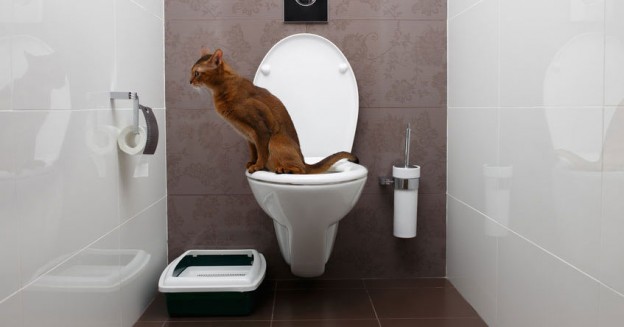Reasons You Should Never Flush Cat Poop Down Your Toilet - Important Information
Reasons You Should Never Flush Cat Poop Down Your Toilet - Important Information
Blog Article
What are your thoughts concerning How to Dispose of Cat Poop and Litter Without Plastic Bags?

Intro
As cat owners, it's important to be mindful of how we deal with our feline pals' waste. While it may appear practical to flush pet cat poop down the commode, this technique can have detrimental effects for both the setting and human health and wellness.
Environmental Impact
Flushing pet cat poop presents hazardous virus and bloodsuckers into the water, positioning a substantial threat to marine environments. These impurities can negatively affect marine life and compromise water top quality.
Health and wellness Risks
In addition to environmental problems, flushing pet cat waste can likewise pose health and wellness threats to human beings. Cat feces might contain Toxoplasma gondii, a bloodsucker that can cause toxoplasmosis-- a potentially extreme disease, particularly for pregnant females and individuals with weakened immune systems.
Alternatives to Flushing
The good news is, there are safer and much more responsible ways to deal with feline poop. Consider the following options:
1. Scoop and Dispose in Trash
The most typical method of taking care of pet cat poop is to scoop it right into a biodegradable bag and throw it in the garbage. Make certain to use a devoted clutter scoop and take care of the waste immediately.
2. Use Biodegradable Litter
Select naturally degradable pet cat clutter made from materials such as corn or wheat. These clutters are environmentally friendly and can be securely gotten rid of in the garbage.
3. Bury in the Yard
If you have a backyard, think about hiding feline waste in an assigned location away from veggie yards and water resources. Make sure to dig deep sufficient to stop contamination of groundwater.
4. Set Up a Pet Waste Disposal System
Purchase a pet dog waste disposal system specifically developed for pet cat waste. These systems make use of enzymes to break down the waste, lowering smell and ecological effect.
Conclusion
Responsible family pet possession prolongs past supplying food and shelter-- it also entails proper waste monitoring. By avoiding flushing cat poop down the commode and selecting alternate disposal methods, we can decrease our environmental impact and safeguard human wellness.
Why Can’t I Flush Cat Poop?
It Spreads a Parasite
Cats are frequently infected with a parasite called toxoplasma gondii. The parasite causes an infection called toxoplasmosis. It is usually harmless to cats. The parasite only uses cat poop as a host for its eggs. Otherwise, the cat’s immune system usually keeps the infection at low enough levels to maintain its own health. But it does not stop the develop of eggs. These eggs are tiny and surprisingly tough. They may survive for a year before they begin to grow. But that’s the problem.
Our wastewater system is not designed to deal with toxoplasmosis eggs. Instead, most eggs will flush from your toilet into sewers and wastewater management plants. After the sewage is treated for many other harmful things in it, it is typically released into local rivers, lakes, or oceans. Here, the toxoplasmosis eggs can find new hosts, including starfish, crabs, otters, and many other wildlife. For many, this is a significant risk to their health. Toxoplasmosis can also end up infecting water sources that are important for agriculture, which means our deer, pigs, and sheep can get infected too.
Is There Risk to Humans?
There can be a risk to human life from flushing cat poop down the toilet. If you do so, the parasites from your cat’s poop can end up in shellfish, game animals, or livestock. If this meat is then served raw or undercooked, the people who eat it can get sick.
In fact, according to the CDC, 40 million people in the United States are infected with toxoplasma gondii. They get it from exposure to infected seafood, or from some kind of cat poop contamination, like drinking from a stream that is contaminated or touching anything that has come into contact with cat poop. That includes just cleaning a cat litter box.
Most people who get infected with these parasites will not develop any symptoms. However, for pregnant women or for those with compromised immune systems, the parasite can cause severe health problems.
How to Handle Cat Poop
The best way to handle cat poop is actually to clean the box more often. The eggs that the parasite sheds will not become active until one to five days after the cat poops. That means that if you clean daily, you’re much less likely to come into direct contact with infectious eggs.
That said, always dispose of cat poop in the garbage and not down the toilet. Wash your hands before and after you clean the litter box, and bring the bag of poop right outside to your garbage bins.
https://trenchlesssolutionsusa.com/why-cant-i-flush-cat-poop/

We were made aware of that editorial on Don’t flush cat feces down the toilet through a good friend on another web address. Make sure you take a moment to distribute this blog posting if you appreciated it. Thank you for your time. Don't forget to come by our website back soon.
Call Today Report this page